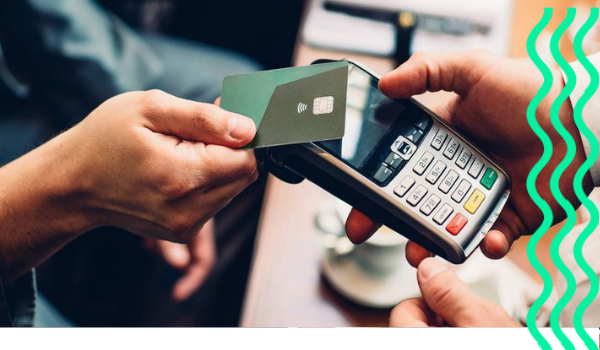Contactless transactions will be capped at N15,000 per transaction, with a daily maximum of N50,000.
Nigeria’s financial regulator on Tuesday announced new guidelines for digital payment providers who offer contactless payment solutions. Contactless payments broadly refer to transactions where users pay by simply tapping or waving their payment devices at point-of-sale terminals. It is also called proximity payments.
Under the new rules, users can tap or wave their devices (including smartphones and cards) that are enabled with contactless technology to make payments without needing to input a PIN to confirm the transaction. But such transactions will be limited to ₦15,000 ($19.65) for a single payment or ₦50,000 ($65.5) daily.
Contactless payments are powered by radio frequency identification (RFID) or near-field communication (NFC) technology both of which allow enabled devices to initiate and authorise payment transactions without additional authorisation confirmation from the user.
EMVCo—named for the organizations (Europay, Mastercard and Visa) that established it— works with payment industry stakeholders globally to set technical standards for smart payment cards and the POS readers that accept them.
The COVID-19 pandemic is credited for accelerating the use of contactless payments. In 2020, the WHO urged a switch to contactless as part of measures to help slow the spread of COVID-19. In response 30 European countries raised their limits on contactless payments in the same year. In 2021 the UK contactless payment limits again to £100 in October 2021, making UK consumers among the world’s biggest spenders without having to confirm their identity. Three-quarters of all Mastercard transactions in Europe are contactless. In the UK, Visa says the figure is as high as 80% of in-person payments.
Nigeria’s contactless payments rules place the burden of fraud with acquirers (i.e. the bank of the payment recipient), issuers (i.e. the bank of the customers) and merchants (the business) who offer contactless payment channels. Per the guidelines, they will be liable for fraudulent transactions “arising from their negligence and/connivance.” In addition, the guideline specifies that contactless payment be only enabled for users who have Bank Verification Numbers (BVNs). Contactless transactions that are higher than the limit will require additional authorisation in the form of a PIN, mobile code or biometric identification.
Regulators in the US and Ecuador do not place any limits on single contactless transactions.
To combat fraud Nigerian fintechs have moved to include ID verification as part of the onboarding process instead of simply placing limits on transactions. Paga, founded in 2009 recently announced that it would require all customers to pass additional ID verification regardless of their KYC level.
Nigeria’s central bank said it considered the risks associated with contactless payments before limiting how much users can make with contactless payment methods. Limiting transaction amounts on contactless payments is a standard fraud mitigation risk. There is evidence that it works. According to the data analytics company, FICO, “data from UK Finance revealed that in 2020 there was a total of £574 million lost through card fraud. Of this, only £16 million represented contactless payment fraud. Against a total of £9.46 billion worth of contactless transactions, that equates to 1.8p worth of fraud in every £100 spent using contactless technology.”
South Africa leads the way in contactless payments in Africa. In January Tech Central reported that more than half the customers of First National Bank (FNB) use contactless payments. “Consumers have shown a strong preference for contactless payments using their contactless-enabled cards or smart devices,” said Ashley Saffy, head of business development at FNB South Africa.











